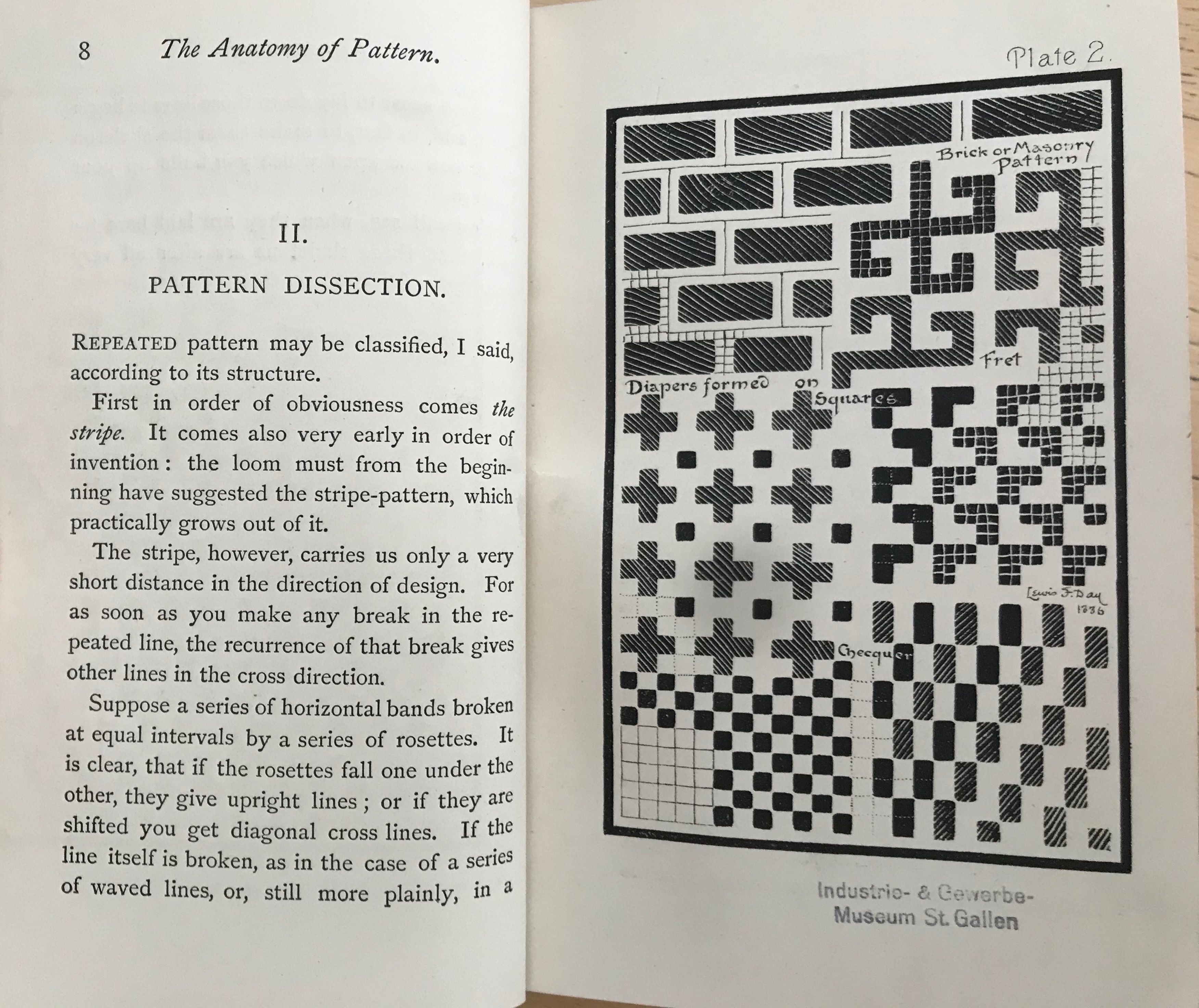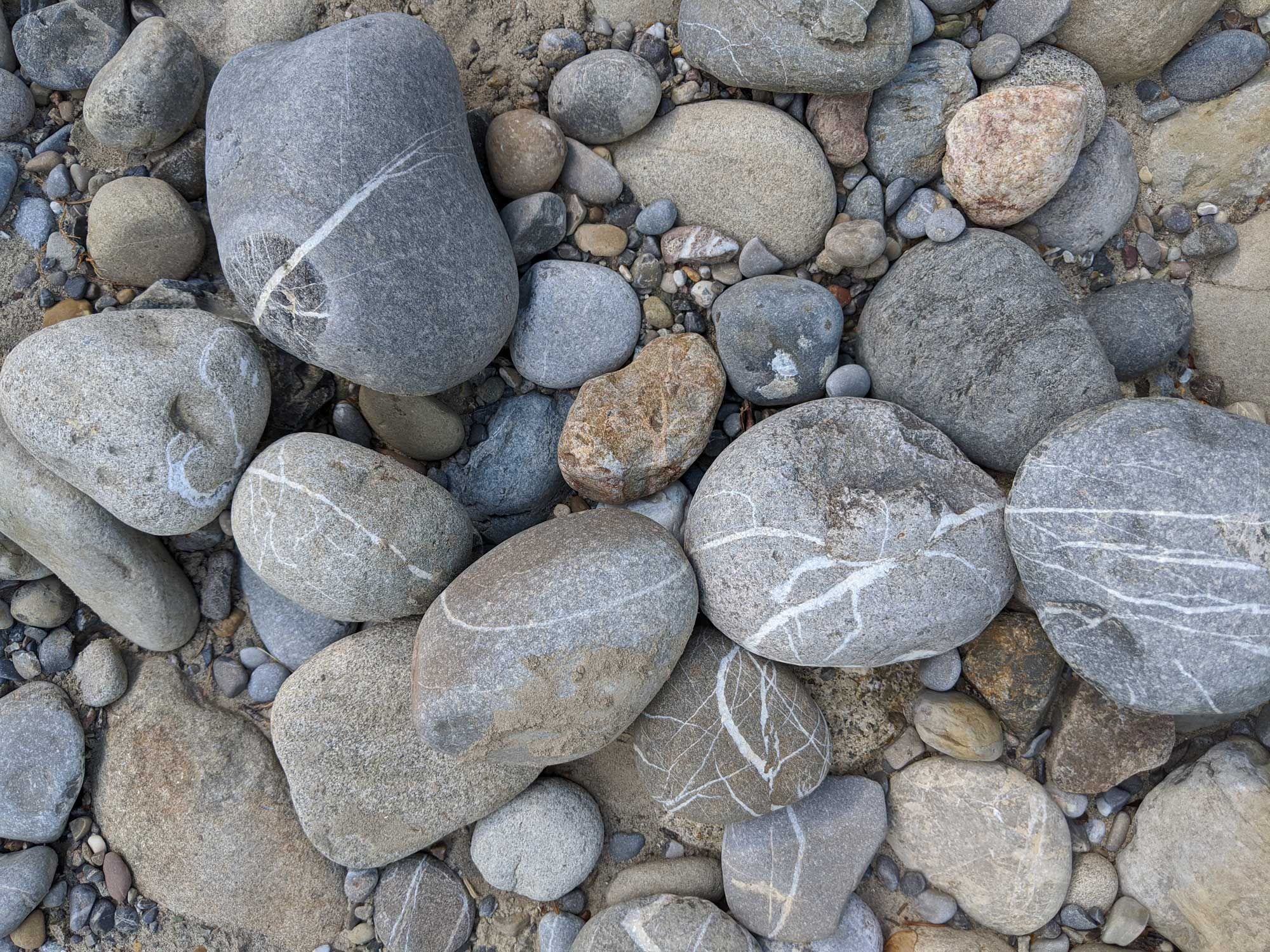
The mesh of stripes, the Anatomy of patterns
op.cit. Lewis Foreman Day:
(...) as soon as you make any break in the repeated line, the recurrence of that break gives other lines in the cross direction.

The thread of life, the life of threads
“When there is a risk of getting lost, we follow a thread. It allows us to find our way as we enter a disorienting labyrinth, traverse a dense forest, make sense of a complicated plot in a novel, or try to understand an intricate argument. But it is not always an obvious undertaking. How can we distinguish a thread in the midst of a rich texture, a tightly woven fabric, or a close-knit network? We only follow a thread when a path confronts us with unmarked stations, unpredictable turns, and multiple choices; indeed, we would not need a guiding device if, from the start, we had gained an overview of where to go. A thread is our connection with a future we cannot entirely foresee, or with something yet to come that we cannot simply anticipate. It protects us from confusion and takes us to a place we must still discover, if only because we are not there yet.”
Alexander Garcia Düttmann in Textile Terms: a Glossary. Textile Studies Series Volume 0 (Edition Imorde, 2017)

The line of history, the Historia of lines
A stone with a line.
It comes from a massive piece of Earth’s surface, a mountain. It fell, it rolled. The river shaped it, roundish.
Tim Ingold wrote that "any history of the lines has to start with the relations between lines and surfaces".
Many stones and many ways.

A point can never be a line, a line can never be a surface, a surface can never be massive.
Mass becomes surface, made of lines, discrete.
Between my perception and my understanding, the timelines of my thinking appear to be fragmented.